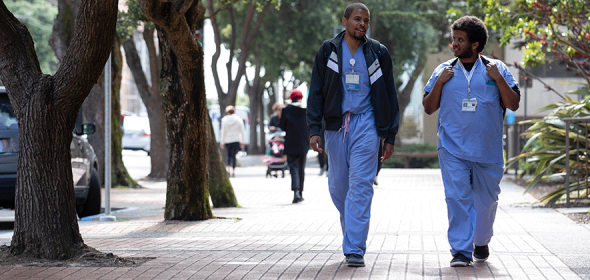By Sunita Mutha, MD, FACP
Medical education debt has nearly tripled during the past few decades, and our new report finds that Black, Latino and Native American students face significantly higher levels of debt than White students. For example, nearly half of Black students had $300,000 or more in dental school debt, significantly higher than all other groups. Medical students from underrepresented backgrounds also have higher levels of educational debt. In 2016, Black students at allopathic (MD) medical schools were the most likely to have $300,000 or more in debt (17.1%), followed by American Indian (14.1%), Latino (10.8%), White (10.3%), and Asian students (8.2%). In the 2016-2017 academic year, the average osteopathic medical school debt was highest for Black students ($286,540), followed in descending order by Latino students ($265,413), White students ($240,903), and Asian students ($216,194).
I care about social justice, so I inherently believe this is wrong. I believe that everyone who dreams of training to be a doctor should have the opportunity to do so. But, even for those who aren’t concerned about social justice, there are compelling reasons for why this situation needs to change.
A body of evidence shows that physicians and dentists who speak a patient’s language or who share a patient’s culture create better health outcomes. As our state and nation face overwhelming health care workforce shortages, especially in underserved communities, high levels of educational debt may lead underrepresented minority (URM) health professionals to choose practice settings where they are less likely to provide care to low income or uninsured patients. In the end, debt may exacerbate the difficulties that low-income Americans, particularly underrepresented racial and ethnic groups, face in obtaining effective, timely and affordable care.
There are two policy strategies for reducing the educational debt burden for URMs. The first strategy is to reduce or eliminate the level of educational debt through scholarships, loan repayments and income-sharing agreements. The second strategy is to decrease educational costs by shortening the duration of education or reducing tuition. One way this can be accomplished is through tuition reduction or elimination programs for all students that are supported by private philanthropic endeavors. Other options include targeting reductions in the cost of education for students of certain racial/ethnic backgrounds who commit to practice in certain areas (e.g., health professional shortage areas) to increase concordance (racial/ethnic, cultural and linguistic) of health professionals for these communities.
With the progress of the California Future Health Workforce Commission, which is working to address health workforce shortages throughout the state, in addition to California Governor Gavin Newsom’s commitment to health equity, our state is well positioned to address this issue. Our report contains numerous strategies and policy solutions to propel action.
I remember the day I finally paid off my own medical school loans. After years of study, hard work and so little sleep, I could see a light at the end of the tunnel. Similarly, I can see a day soon where URMs are free to pursue their dreams. Coordination among state agencies, philanthropic entities and educational institutions will get us there.
The full report can be found here.
 About Sunita
About Sunita
Sunita Mutha, MD, FACP, is the director of Healthforce Center at UCSF, a professor of clinical medicine and internist at UCSF. With more than 20 years of experience as a physician and health researcher, she brings a deep knowledge of the health care landscape and a passion for preparing leaders to improve health in their communities and beyond. Dr. Mutha is also a nationally recognized expert in health workforce training and cultural competence curriculum development. Her research has focused on approaches to improving care with an emphasis on the intersection between quality improvement and health care disparities.
Join Us
Sign up to learn about the latest health workforce research insights and leadership opportunities from Healthforce Center, an organization dedicated to helping health care organizations drive and navigate change.
